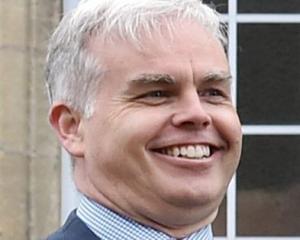Rebecca Fox's article on water (ODT, 3.1.12) lays out the Otago Regional Council's perception of its own performance when it comes to non-point source pollution in rivers and minimum flows.
She notes a divergence in the views between the ORC and both Green Party co-leader Russel Norman and the New Zealand Conservation Authority's Kay Booth.
The Otago Regional Council is projecting a very positive image of Otago water resources, which is justified in some respects but not in others.
Mr Norman and Dr Booth are both highlighting the plight of many of New Zealand's rivers from a range of threats - pollution, irrigation demand and hydro development.
Nationally, rivers are in dire straits and something urgent does need to be done if their amenity and biodiversity values are to be retained for present and future generations.
Dr Booth goes further and argues for better protection for a selection of our best remaining rivers. Mr Norman has boated down rivers up and down the country, some "dirty" and some, like the Nevis, threatened by hydro development.
It is pleasing to see at least one politician getting out in the field and getting his feet wet.
There have been marked declines in water quality from one end of the country to the other associated with agricultural intensification, particularly relating to dairying.
Southland's recent crisis with the internationally renowned Waituna Lagoon is a case in point - they have a massive environmental problem there and no immediate solution.
At the other end of the country Northland's Kai Iwi lakes are under pressure from land-use impacts including forestry and farming.
Intensification in farm production over the past 10 to 15 years has not been matched by improved management of non-point source pollution and has led to serious water quality declines in affected areas, and when coupled with increased irrigation demand the effects on river ecosystems are magnified.
That applies equally in Otago and presently all regional councils are having to play catch-up with policy responses.
But the lag time from identification of water quality problems through policy development to plan implementation can take most of a decade and that is far too long to wait.
In Otago we have had an operational water plan for eight years now and that is a big plus.
The ORC can be rightly proud of that achievement and it is easy to forget where it has had a beneficial effect - a cleaner lower Clutha due to reduced point waste discharges; better management of river channels as habitats; and minimum flows on some rivers.
On the other hand, plan implementation has not been able to adequately protect some wetlands and water quality remains poor in areas of intensive agriculture.
The Otago Regional Council is moving to plug the holes in the plan through its Rural Water Quality Strategy and other plan changes. The strategy is one of a number of policy responses emerging from regional councils around the country, but it differs from the others in proposing in-stream water quality standards to be met collectively by land users.
The ORC argues that treating farming as a "permitted activity" regardless of intensity, and allowing individual farmers themselves to devise solutions to runoff contamination is a more practical and less costly approach than the more regulatory methods being adopted by other councils, requiring land-use changes to gain individual resource.
The simplicity of the ORC's approach is appealing but the regime has yet to be developed, let alone proven, and we are probably three to five years away from implementation.
In the meantime land-use intensification is continuing - at Hawea Flat, in the Manuherikia and more still in South and West Otago.
The Otago Regional Council's claim that the majority of Otago rivers are in good shape and that water quality is generally high grates a bit.
Many flow out of national parks, mountain ranges or big glacial lakes and so they reflect a lack of catchment development rather than the ORC's water management.
The ORC's management efforts come into play in the intensively farmed areas such as the upper and lower Taieri, and South and West Otago and they are understating the problem to describe entrenched poor water quality in those areas as "one or two hot spots".
While there is increasing activity aimed at reining in run-off contamination in terms of research, monitoring, compliance and enforcement, we have yet to turn the corner in pressured areas. Farmers themselves are doing more environmental management and there are more co-operative community efforts in the Taieri, the Lindis and now the Manuherikia catchments as well.
But we won't be successful until in-stream water quality is at or above the standards the community expects. There is absolutely no room for complacency and there is every reason for a sense of urgency.
The other aspect of the Otago Regional Council 's water management currently under action is the setting of more minimum flows on Otago rivers. Although the Otago Regional Council lays a heavy emphasis on community consultation, Fish and Game reports it finds them reluctant to debate issues through to a satisfactory conclusion.
In addition, they are not facilitating stakeholders' interaction on issues, and seem to want to get formal plan change processes under way as soon as possible simply to stay ahead of the Government's impending national standards.
It is worth remembering that in 2000 the setting of the first batch of water plan minimum river flows ended up before the Environment Court.
On one side Fish and Game and the Department of Conservation were arguing for improved flows for river ecosystems and fisheries while the Otago Regional Council argued for lesser flows.
A long and expensive hearing thoroughly tested the scientific evidence and eventually resulted in an upward shift from the levels the Otago Regional Council had proposed.
Setting minimum flows is a positive move environmentally, but setting flows that are too low will blight Otago's rivers for the next 100 years.
Ironically, it is in areas where water is most scarce - in Central Otago - where there is most dialogue and where there seems most likelihood of reaching agreement without ending up in court.












